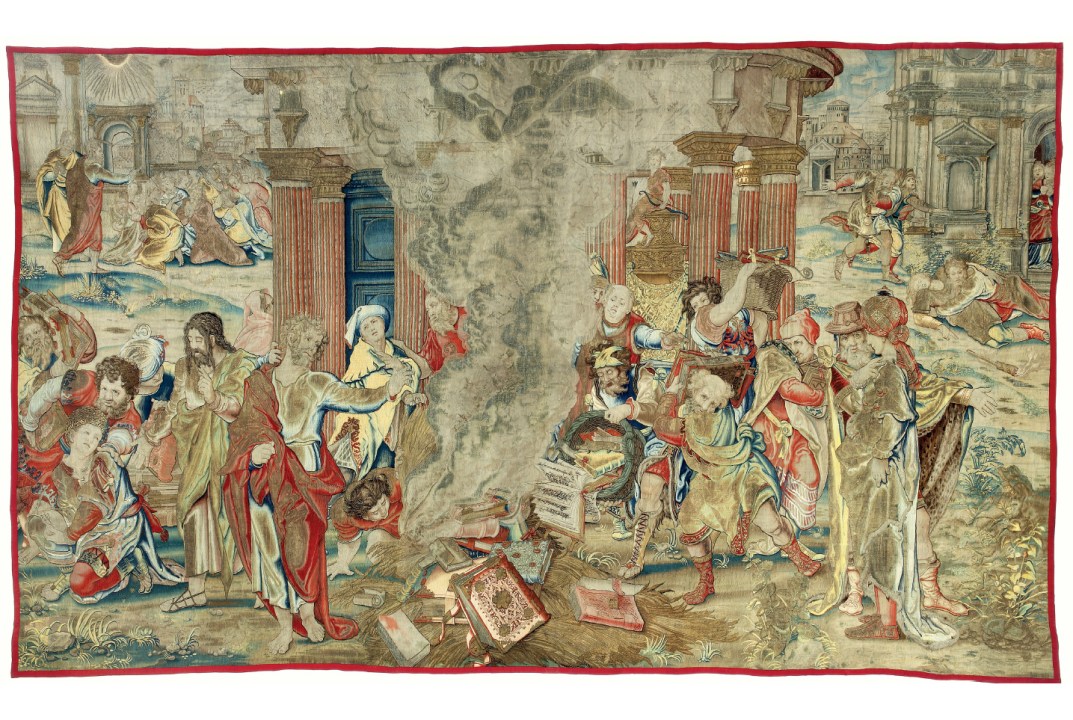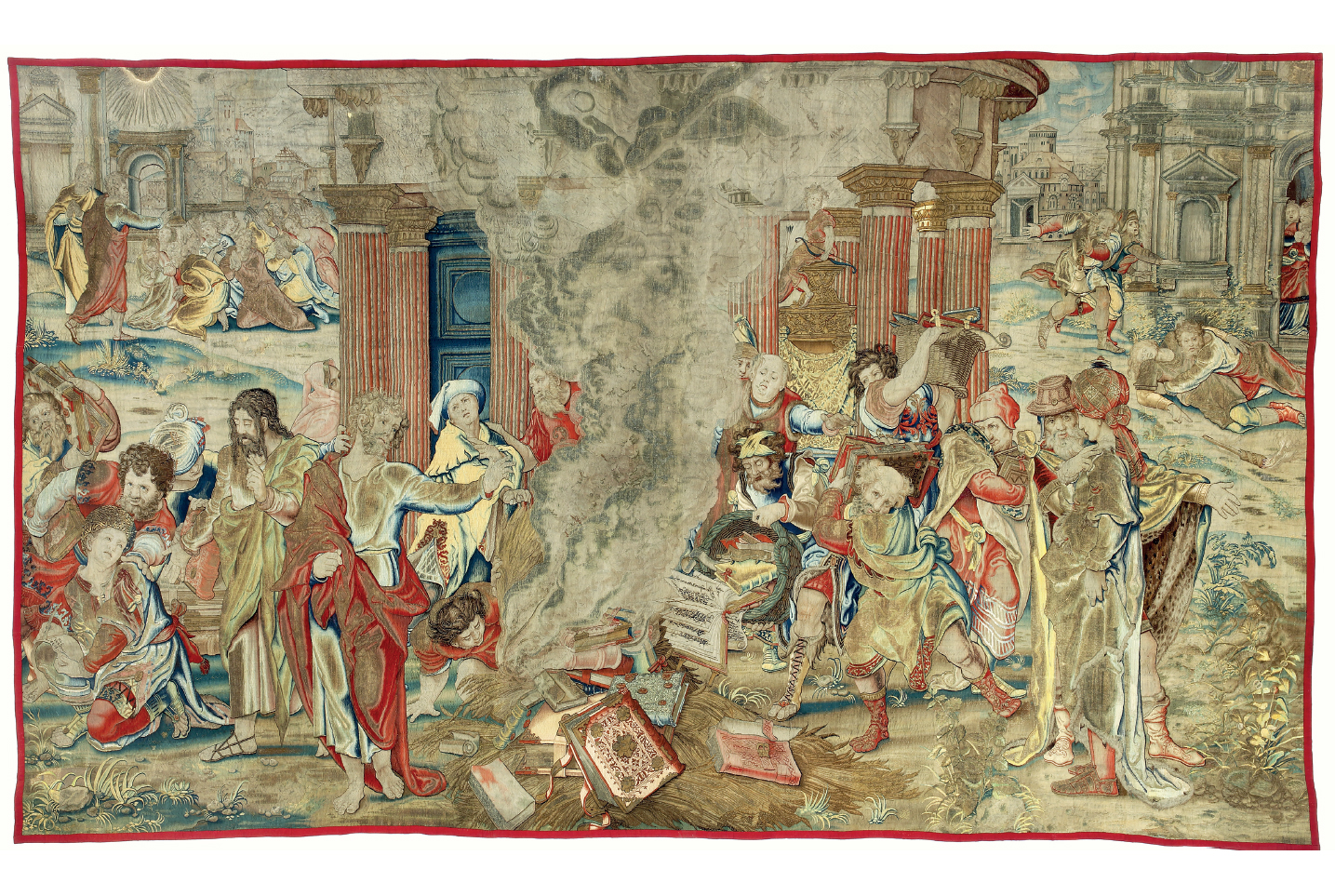Last month there was rejoicing that Joshua Reynolds’s ‘Portrait of Omai’ had been saved for this country at a cost of £50 million. My hat was in the air with everyone else’s. But much less attention has been given to another artwork that is in need of rescuing, one of far greater national and artistic importance: an object that proclaims the birth of the Church of England – and is available for less than a tenth of the cost of ‘Omai’.
It has been described as the ‘Holy Grail of Tudor tapestry’
‘Saint Paul Directing the Burning of the Heathen Books’ by Pieter Coecke van Aelst is a monumental tapestry, nearly 20ft long and 12ft high. It is the sole survivor of a series of nine tapestries that Henry VIII commissioned in the mid-1530s on the life of Saint Paul. Tapestries were the currency of culture in kingly circles at the time (a generation later, the taste had turned to Titians). Only the very wealthiest could afford them. Half a dozen gold-embroidered tapestries would set you back almost as much as a fully armed warship. Van Aelst’s piece became one of the Royal Collection’s most expensive objects. Today monumental woven marvels are not a curatorial must-have, and the institutions that possess them – the Historic Royal Palaces and the V&A in particular – have many in storage. In the battle for space, they are dreadnoughts, superannuated, off-message.
This one, though, is an orchid among the daffodils. The former head of New York’s Metropolitan Museum of Art Dr Thomas Campbell – whose expertise in this field led him to be nicknamed ‘Tapestry Tom’ – described it as ‘the Holy Grail of Tudor tapestry’. Though the subject matter of the tapestry is no bodice-ripper – indeed it is scarcely comprehensible to a modern audience – the work does directly concern Henry’s sex life.








Comments
Join the debate for just £1 a month
Be part of the conversation with other Spectator readers by getting your first three months for £3.
UNLOCK ACCESS Just £1 a monthAlready a subscriber? Log in